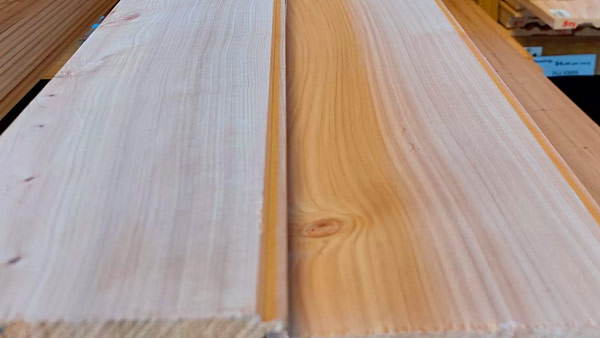Macrocarpa timber, abundant in New Zealand, serves numerous purposes. Its durability and natural resistance to decay make it suitable for outdoor furniture (see our guide to using Macro outdoors), fencing, and landscaping. The wood’s rich, warm hue enhances interior designs through flooring, paneling, and cabinetry. Macrocarpa’s versatility extends to agricultural applications like barn construction and animal enclosures. Furthermore, its aromatic properties make it an excellent choice for crafting rustic ornaments and essential oil extraction.

Uses
- Internal and external joinery
- Built-in furniture
- Exterior weatherboards (knot-free heartwood only)
- Framing
- Decking
Selection factors
- Availability of suitable timber may restrict some uses
- Non-plantation timber prone to distort in full sunlight
- Easy to work but best to pre-drilled for dry nailing
- Accepts paint but stains unevenly
| Common names | Macrocarpa, Monterey cypress |
| Species | Cupressus macrocarpa |
| General description | – Heartwood is yellowish golden-brown – Sapwood is lighter coloured – Pleasant smell – Fine even texture – Softwood |
| Origin | California |
| Sustainability | Obtained from farm shelterbelts, with some plantation grown |
| Availability | Availability of good-quality heartwood is variable because of its source |
| Durability & treatment | The heartwood is moderately durable and the sapwood can be treated to H1 by the diffusion process (it is not suitable for pressure treatment) |
| Drying | Should be air-dried to 30% MC to avoid collapse and internal checking and then finished in a kiln |
Technical Specs
| Physical Characteristics | ||
|---|---|---|
| Shrinkage | Tangential | 3.2% |
| Radial | 1.8% | |
| Strength group | Unseasoned | NDA |
| Seasoned | NDA | |
| Density | 485 kg/m3 | |
| Hardness | 2.8 | |
| Durability Class | Moderate |
